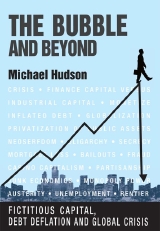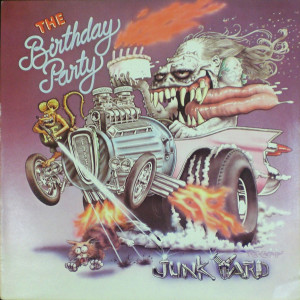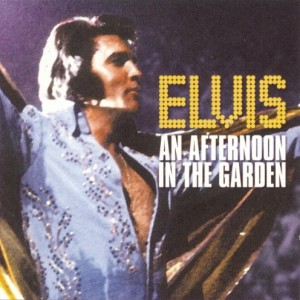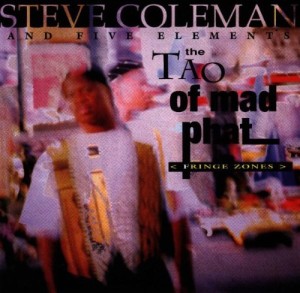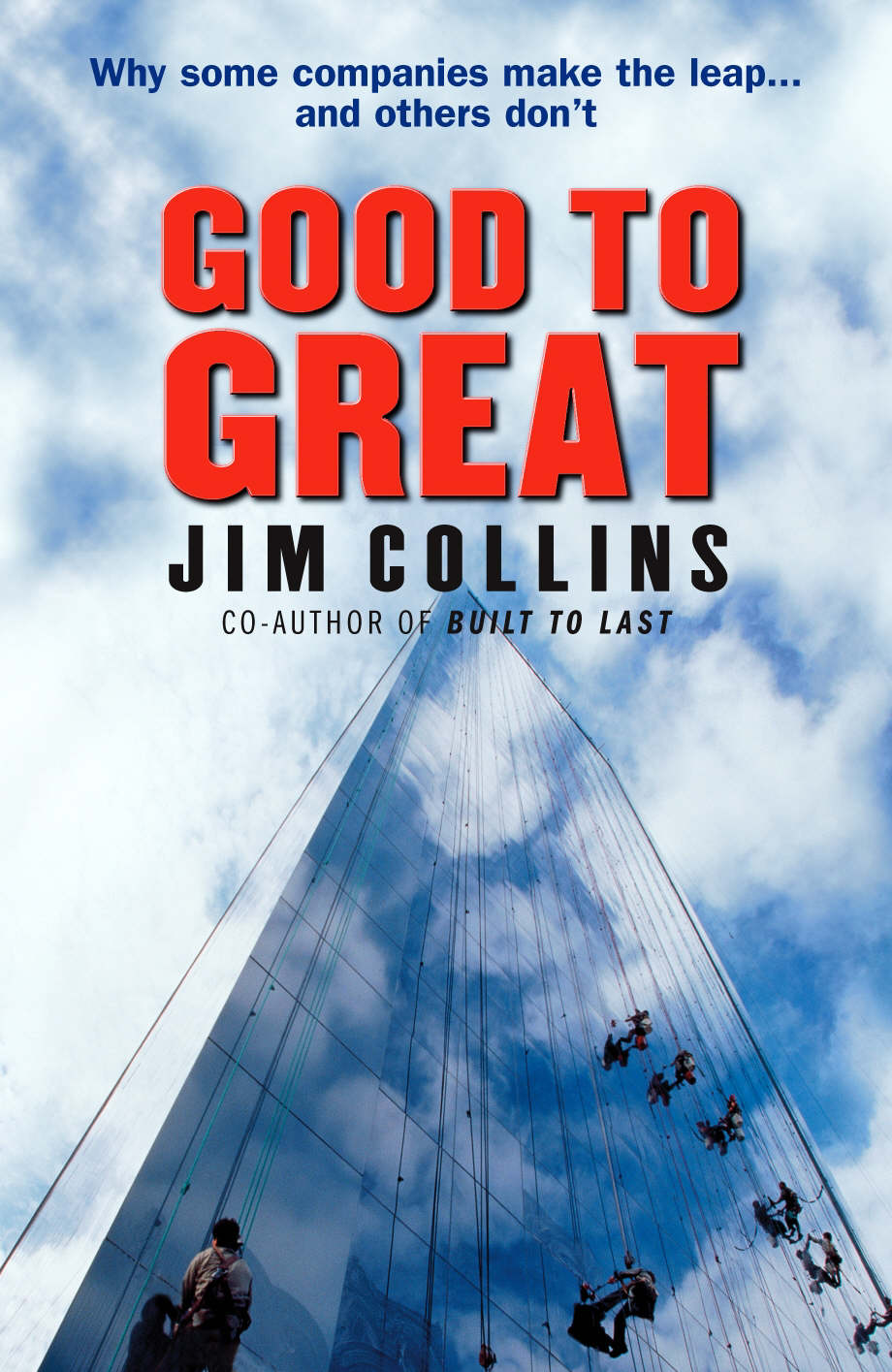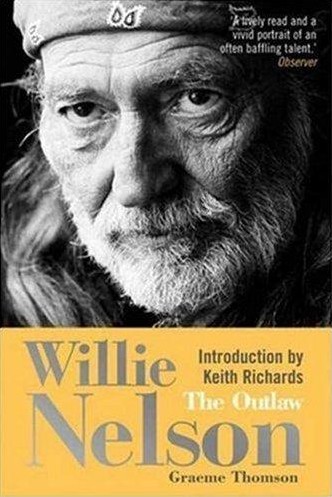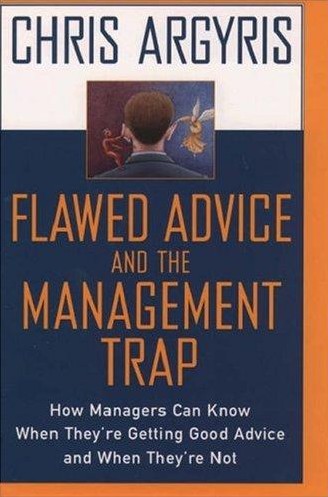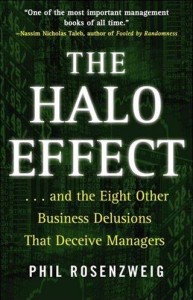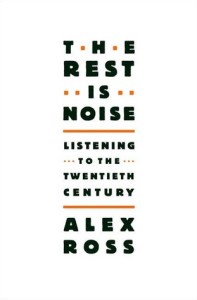Link to an article by Jack Rasmus. It’s hard to tell what this is in “reply” to, as neither Hartmann nor Wolff are mentioned following the title. Regardless, it’s an interesting, if brief, statement of his theory:
Author: Syd Fablo
Michael Hudson – The Bubble and Beyond
Michael Hudson – The Bubble and Beyond: Fictitious Capital, Debt Deflation and the Global Crisis (ISLET 2012)
If you have time for just one economist today, Michael Hudson would make an excellent choice. The central premise of The Bubble and Beyond is that “the miracle of compound interest” has for all time tended to exceed growth of the “real” economy, which invariably leads to excessive credit claims that cannot be paid. He cites Richard Price‘s famous example of how a penny invested at 0 BC with 5% compound interest would have by Price’s time (1772) become a solid sphere of gold reaching to the orbit of Saturn — obviously unpayable! Part of the problem today lies with the self-serving tendency of mainstream economics to exclude analysis of finance (particularly the closely-related finance, insurance and real-estate or “FIRE” sectors) from the analysis, which Hudson attempts to incorporate into a more inclusive model. All past economies (excepting ancient Rome) burst such financial bubbles to wipe out bad debts. But Hudson has shown that the ongoing financial bubble organized by the Washington Consensus (Alan Greenspan being the most recognizable face of the phenomenon) has resisted debt write-downs by fueling further debt pyramiding (paying debts with more debt). Building on his landmark book Super Imperialism (a must-read), he shows how the Washington Consensus has adopted tactics not unlike those of a suicide bomber, threatening to destroy countless economies if demands (from the USA, the world’s largest debtor) are not met. But further, he does not shy away from illustrating how countries that do not toe the line are routinely invaded by military forces or subject to “color revolutions”. Hudson is spot on in his analyses, in a way that is refreshingly accessible, reasonable and reliable. He provides summaries of the history of economics that demonstrate how many of the concepts he is now restating have been known — if marginalized — for centuries. Yet many past writers could not have anticipated the sheer magnitude of the present bubble economy, or the ways in which vested interests would successfully stave off reasonable solutions. Much of the problems revolve around tax policy, in Hudson’s view, with a clear need for a more progressive income tax, especially with higher rates for “capital gains”. Oh, and there is a need to deal with financial fraud too, by sending criminal banksters to prison. But those policy prescriptions have a successful history in modern Western states that debt write-offs do not enjoy. It is there that Hudson goes the extra step. He says bankers need to take a loss on bad loans, and he backs up that claim with historical examples that go back to earliest recorded history in Mesopotamia. This historical grounding demonstrates that current tactics are fundamentally inadequate, from the historical perspective. There lies his most important contribution. He provides context for the way dominant think today deviates from accepted wisdom of the past. This allows the reader to step outside the economic paradigm of the present to envisage another, more stable and equitable one.
This is a good book, and an important one. But due to the importance of the topic, it is worth pointing out a few areas where the book is lacking — or simply where a second edition could make some simple improvements. First, as many other reviewers have noted, this book is basically a self-published collection of materials from pre-existing articles. As always follows in such cases, the editing and proofreading is abominable, with typos, duplicate paragraphs, and tedious repetition endemic throughout the book (particularly where disparate articles were making the same or very similar points). This man deserves a good editor!! Second, there is a general lack of adequate citations. Hudson spouts off numbers without revealing where they come from, and talks about things like the ancient Roman economy while only mentioning historians like Plutarch in passing near the end, many chapters later. Of course, there are portions of the book that include a rich set of citations, and those wonderful efforts cast somewhat of a pall on the chapters that lack them. Moreover, he talks about things like bank “keyboard credit” without adequately explaining his use of such terms (Norbert Häring and Niall Douglas’ Economists and the Powerful does a superior job explaining that point, for instance). Third, Hudson gets bogged down in a bit of a “sour grapes” tone when deriding mainstream economics, particularly the “Chicago School Monetarists” like Milton Friedman. Hudson is absolutely right that those mainstream schools of economic thought are really no more than lobbying efforts on the part of financial interests, not objective “science” or anything approaching it. But the endless repetition of the accusations does get tiresome, and what would have had quite an impact in a single chapter gets dulled somewhat when revisited over a dozen or more. It also would have been interesting if Hudson elaborated on the ways ignored economists like Frederick Soddy and Thorstein Veblen wrote about many of these exact same topics 80-125 years ago (he occasionally refers to his other books when discussing Simon Patten, but few besides Patten get adequate treatment in these pages). Moreover, while Hudson laments how the economics discipline has been hijacked by hacks shilling for Wall Street, he doesn’t really explain why a sociologist like the late Pierre Bourdieu could write a microeconomics book like The Social Structures of the Economy that dovetails well with Hudson’s macroeonomics. Why continue to think in terms of the narrow confines of provincial, silo-ed academic specialties, thereby reinforcing them?
Minor flaws aside, this is the sort of work that better deserves the attention lavished on Thomas Piketty‘s Capital in the Twenty-First Century. At the least, readers should investigate some of Hudson’s articles for Harper’s Magazine (incorporated into the book), which provide some important general summaries, or read up on the citation-rich chapters showing how Karl Marx repeated claims by protestant reformer Martin Luther that are even omitted from anthologies of Luther’s works! There’s a host of valuable material here and the world would be a better place the more widely its concepts were known.
The Birthday Party – Junk Yard
The Birthday Party – Junk Yard 4AD CAD 207 (1982)
The Birthday Party reached a peak with Junk Yard. It soars on a pulsing energy that never fades. It is goth rock. It is punk. Frightening rockabilly. Angular funk. Gospel and blues. Demonized cabaret lounge jazz. These and other styles collide in a gruesome, purposeless, and—above all—glorious spectacle. But the darkness in which this music dwells is entirely stable. It is confident, at least. The album is mixed to emphasize the low end and the high end, with little mid-range. There are no compromises.
The Thatcher-Reagan era has, in many ways, turned out to be the beginning of the end (or at least another milestone in the world’s continued march towards an easily avoidable doom). Junk Yard plays like The Birthday Party intuitively knew this. The slow groove of “She’s Hit” reveals from the beginning that this group was more aware than most. They absorbed the maddening energy of the times, without becoming bound to them. Unlike the living dead of the world, who are modeled on an image of the past, The Birthday Party were in a state of regenerative flux, continually rebuilding something morbidly happy from the decay.
“Hamlet (Pow, Pow, Pow)” is a sleazy literary come-on, and Nick Cave sings, “Where for art thou baby-face.” Still, the words come out more like a warning to a future victim issued too late. And yet, The Birthday Party can be trusted. Despite rubbing out simple hopes and pleasant dreams, the band’s resolve is never spent. If something on this album doesn’t arouse something in you, then you might already be spiritually bankrupt. But either way, at least you will wonder what you are made of.
Barry Adamson guests on “Kiss Me Black” (filling in for the jailed Tracy Pew). His bass blasts to the forefront immediately with mangled tones that bend enough to engross listeners as much as whole songs or albums often do. Matched with Cave belting out, “Hey hey hey hey,” the song reveals no intention of relenting. The song is a small representation of all the band was.
Easily the most important rock band to emerge from Australia, aside from The Bee Gees, The Birthday Party later disbanded after recording a few EPs but no further full-length albums. While there is a saying about wicks that burn brightest burning the shortest, that quip doesn’t quite capture what The Birthday Party were about. They were a black hole that sucked life and the universe into a seeming nothingness. What that leaves us with is anyone’s guess. In a black hole, no known laws of nature apply.
Elvis – An Afternoon in the Garden
Elvis – An Afternoon in the Garden RCA 07863 67457-2 (1997)
Recorded during the height of Elvis’ “Vegas” show era, An Afternoon in the Garden presents an afternoon show recorded June 10, 1972 at the 20,000-seat Madison Square Garden in New York City. It was part of a sold-out four show stand. The evening show of June 10th was previously released as Elvis as Recorded at Madison Square Garden. There are plenty of live Elvis albums from this era (Elvis in Person at the International Hotel, Las Vegas, Nevada, On Stage: February 1970, Aloha From Hawaii Via Satellite, Recorded Live on Stage in Memphis, not to mention plenty of live cuts on That’s the Way It Is et al.), and most are quite good (uh, not Having Fun With Elvis on Stage though). Guitarist James Burton really gets a chance to shine here, even getting space for a psychedelic wah-wah solo on the Presley favorite “Polk Salad Annie.” The set list is almost the same as on Elvis as Recorded at Madison Square Garden, minus “The Impossible Dream” but with a few additional tunes here. For that matter the set list is similar to many other Presley live albums. But these are all great tunes. What makes this set so amazing is that you get some of the soulful bombast of On Stage: February 1970, some of the grandiose theatrics of Aloha From Hawaii Via Satellite, plus some of the kicking rock drive of Elvis in Person at the International Hotel, Las Vegas, Nevada, all rolled into one perfectly balanced package. Elvis just commands this show, with every little flubbed lyric chuckled off and re-purposed as an opportunity to charm the audience. As with most other Elvis live albums of the era, this is a complete show that plays (almost) like being there in person. Pop music rarely if ever had a figure like Elvis who could deliver with spectacular feeling and aplomb the biggest, brightest and best hopes and emotions of salt of the Earth folks who quite rightly dubbed him their king. This is a damn fine album, recommended for anyone.
Steve Coleman and Five Elements – The Tao of Mad Phat (Fringe Zones)
Steve Coleman and Five Elements – The Tao of Mad Phat <Fringe Zones> Novus 63160-2 (1993)
Steve Coleman. There are perhaps few figures in 1990s jazz quite as pretentious. He indisputably was a central figure of that time. So many, from his now well-known early cohorts like Cassandra Wilson to later figures like Vijay Iyer, have taken influence from him. He practiced a style of music he called “M-Base”, short for Macro-Basic Array of Structured Extemporizations. Now, okay, I just called it a style. Coleman has this to say on the matter: “Music critics have constantly stated that M-Base is a musical style and this is not true. Since the beginning of time critics have by and large been unable to deal with any creative expression. M-Base is a way of thinking about creating music, it is not the music itself.” Mmmm, right, okay Coleman. M-Base merely fits the accepted definition of “style”, but he say it’s not a style. I guess this just puts him in the same category as teenage garage bands that sound just like The Stooges but refuse the connection and insist they are totally unique man! You know, the kind of adolescent posturing that tries to talk a big game but does not deliver at nearly the same level, though, in fairness, is perhaps just due to being inarticulate and lacking self-awareness–dooming them to repeat musical history. But that aside, Mr. Coleman should go read Science and Sanity by Count Alfred Korzybski, who famously said “the map is not the territory”, and then reflect on the fact that a table is not a table, it is merely something that is collectively understood by the word “table” and the word is not the thing itself. Now that I’ve sufficiently blown your mind, writing more about Coleman and this album is probably a fucking waste of time, but, frankly, I don’t give a shit. Come back and read the rest later. I’m making a goddamn point here and it needs to be made. Coleman has often used a trick much like many modern economists and their veneer of mathematics used to conceal their faulty assumptions and circular logic (or like Ornette Coleman with his “harmolodics” for that matter), which hides some rather simple ideas behind a bunch of technical jargon and big words.
Tao of Mad Phat has to be among Coleman’s best efforts from the 90s. It was recorded “live” in studio before a small, select audience (not unlike Beach Boys’ Party!). The hallmarks of the man’s sound are all here: lots of electric instruments and synthetic sounds. The focus is on shifting rhythmic textures, with things like melody a mere by-product of the rhythms. But then there is “Incantation”, which features a number of guest spots rather than his usual backing band, and which feels different in many respects from the typical M-Base style.
The basic sound though is kind of cyclic. It’s like James Brown and Maceo Parker, sort of. Though the focus on rhythm gives the music a narrow objective that lacks the daring of Miles Davis‘ funky fusion of the 1970s that took the limitless possibilities of Karlheinz Stockhausen‘s electronic music and applied them to jazz. Steve Coleman usually took the sonic textures of fourth-tier 1980s funk and incorporated them into a jazz setting. The tendency was to produce listless schlock like Black Science. But Tao of Mad Phat isn’t listless at all. The atmosphere provided by the staged “live” setting gives the band a chance to stretch and adjust their rhythms in a fluid manner, without the claustrophobic search for perfect meter, pitch and other distractions to spoil things. For a change, performance takes precedence over theory.
There is the other issue of the “spirituality” of Coleman’s music. This album avoids much direct expression of it in the performances. It’s noticeable mostly in the titles of the songs. Part of this element comes from a very vaguely Pan-Africanist view of the African diaspora, with similarly vague allusions to Asian religions. The Afrocentrist elements were hardly unique to Coleman, as this was the era of One for All and that whole aesthetic. While there is something noble, perhaps, in Coleman’s intentions, most often the problem is that stacked next to, say, Pandit Pran Nath or lots of other purely religious music, Steve Coleman’s stuff just…sounds…so…cheesy. He comes across as the guy with statutes of Buddha, the Virgin Mary, and Ganesh in front of his house, because, well, he values all religions, and he shows it with plaster lawn ornaments. It seems slapped on top, without deep foundations in the music. Here at least, that whole aspect of the music is pretty easily disregarded.
I can’t exactly say I’m a huge fan, but this is a pretty good album, and it’s worth it if you have an interest in the upside of some of the most stultifying forces of the halcyon days of 1990s jazz.
Jim Collins – Good to Great
Jim Collins – Good to Great: Why Some Companies Make the Leap…and Others Don’t (Random House Business 2001)
Read The Halo Effect by Phil Rosenzweig for an absolutely devastating debunking of Good to Great (or the “peer review” by Matthew Anderson). I won’t repeat what is readily available in Rosenzweig‘s book, or elsewhere, but will say that Rosenzweig systematically picks apart how Collins seems to have no understanding how to conduct proper research and how many of Collins’ theories don’t hold up to scrutiny. Much of Good to Great sounds maddeningly like the kind of “science” relied upon by climate change/global warming deniers. In fact, if you read the collection of Albert Einstein‘s writings Ideas and Opinions, in numerous places he states that science cannot involve deducing theory from evidence, which happens to be precisely what Collins claims he has done with Good to Great and Collins calls it the physics of business/management. Everything you need to know about Jim Collins and his ilk can be summed up by recognizing that probably no union has ever organized workers to demand that management gurus like him be brought in. This is not neutral stuff. It is partisan rhetoric used to consolidate power with a management class, and strip it from ordinary workers. In more concrete terms it is about selling feel-good myths to top corporate management, to justify shake-ups and layoffs, and the pay-for-performance regime in executive compensation, for example. There are a few good points in here, but mostly they are reworkings of existing concepts assigned useless new buzzwords by Collins. As many others have made clear, it is sort of amusing to see how many of the companies that Collins trumpets have since gone under (Circuit City), been involved in massive fraud (Fannie Mae, Wells Fargo), or are just plain slimy and corrosive to public well-being (Philip Morris). He seems to defend this in a crude way, simply implying that businesspeople should be sociopaths… Anyway, the bottom-line myth behind this is the idea that MANAGEMENT holds the key to the success or failure or a business. Read Confronting Managerialism by Robert Locke and JC Spender for a useful (and quite different) historical perspective on that. Indeed, the late sociologist Pierre Bourdieu said, “‘Management Theory’, a literature produced by business schools for business schools, fulfills a function identical to that of the writings of the European jurists of the sixteenth and seventeenth centuries who, in the guise of describing the state, contributed to building it: being directed at current or potential managers, that theory oscillates continually between the positive and the normative, and depends fundamentally on an overestimation of the degree to which conscious strategies play a role in business, as opposed to the structural constraints upon, and the dispositions of, managers.” (The Social Structures of the Economy).
Graeme Thomson – Willie Nelson: The Outlaw
Graeme Thomson – Willie Nelson: The Outlaw (Virgin Books 2006)
A good biography on Willie Nelson from Thomson. It seems well-researched, and avoids the rank hagiography so prevalent in these sorts of music bios. The author doesn’t shy from questioning Nelson’s motivations and worst behavior. He also does an excellent job articulating the crazy fine line Nelson walked between positive-thinking new age guru and lazy bum coasting on a reputation without continued hard work as a songwriter and performer. Yet, at the same time, the book doesn’t dwell on tabloid gossip. As for the book’s weaknesses, Thomson falls prey to a few misplaced British anachronisms, like comments about a “football pitch” when he means to say “(American) football field” — there is no way that Nelson was playing soccer in his youth deep in the heart of Texas! Then, too, Thomson stumbles are a pure music critic. He often criticizes some of Nelson’s best work (like The Sound in Your Mind) and praises marginal efforts (particularly early stuff and Nelson’s biggest commercial successes of the 80s). He certainly doesn’t seem to go back and revive some of Nelson most overlooked material (like The Words Don’t Fit the Picture) or necessarily place Nelson in a broader continuum. But, those flaws are fairly easily ignored in a generally fine book.
Chris Argyris – Flawed Advice and the Management Trap
Chris Argyris – Flawed Advice and the Management Trap: How Managers Can Know When They’re Getting Good Advice and When They’re Not(Oxford University Press 2000)
Some good ideas here, but ultimately Argyris falls a bit short. His basic goal is to highlight how many business consulting programs are flawed. He does in fact offer some useful insights and is quite adept at describing some of the “real” problems that businesses face. His strength lies in taking a very psychological approach — it has echoes of the noted French psychiatrist Jaques Lacan. He emphasizes how much behavior of managers is motivated by defensive reactions to avoid embarrassment (what might psychologically be more generally termed “hurt”). Often this produces autocratic responses from managers who seek to impose unilateral control in a counterproductive way and then suppress meaningful discourse on critical topics (often permitting discussion only on what is irrelevant). Argyris’ descriptions fit situations I have witnessed firsthand. Unfortunately, much of this discussion gets mired in unnecessary jargon that is endlessly repeated but never adequately delineated (a glossary or reference table for key terms would help a lot). He does occasionally refer to his past books, but requiring a reader to obtain and read numerous other books in order to understand the current one is not really an acceptable way to write. Moreover, some of his jargon seems to consist of little more than re-labeling of existing concepts (for instance, much of his “theory in use” discussion seems a lot like Alfred Korzybski’s “the map is not the territory” dictum, or sociologist Pierre Bourdieu’s concepts of “habitus” and “a knowledge of the real world that contributes to its reality”). The book makes its key point in saying that other management advice tends to not be actionable or testable. A lot of that “other advice” is well-intentioned and perhaps necessary in the abstract — who can argue with injunctions to be accountable, have courage, and produce results? But, according to Argyris, many of these programs lack the detail to rigorously test unstated assumptions. This is a lot like saying those are necessary but not sufficient factors for success. It’s a more ideological attack on Tom Peters/Jim Collins/Stephen Covey nonsense than books like Phil Rosenzweig’s methodological critique in The Halo Effect (which is actually a much better book overall). Where this book falls very flat is that once he has torn down other approaches, Argyris puts little in its place. Argyris’ examples (often in the form of a transcript with annotations) are often esoteric, leaving the reader wondering about the context for the unexplained titles and roles of the characters, and are most often presented as if self-explanatory while lacking any actionable analysis (the very same flaw he points to in other programs). He discusses a lot of role-playing situations, but never clearly establishes that role-playing is an effective tool (one gets the impression that useful information is withheld from this book in order to encourage companies to instead simply hire the author as a consultant). But it also bears mentioning that Argyris is a strong influence on the bogus “fifth discipline” organizational learning crowd, and so must be viewed with a skeptical eye.
In short, this book highlights some extremely frustrating aspects of corporate and business culture, particularly some of the insufferable lies perpetrated by management seeking to assert (or reassert) unilateral control while feigning to engage in “collaboration” or “teamwork” (the real core of the Peters/Collins/Covey-style programs) that only applies to the lower rungs of a business. He offers useful clues to spotting those flaws. But other than that, this book doesn’t put much on the table as an alternative, so don’t come expecting to find it here. In the end this seems like a rather lightweight overview of a topic that deserves better treatment.
For a critique that offers an entirely different perspective (more academic, less practical — and with a few equally stupid recommendations), try Robert Locke and JC Spender’s Confronting Managerialism which offers a historical perspective on US management contrasted to German and Japanese styles and concludes that much of the problems have to do with balance of power (especially the influence of finance), pay inequality, differences between guilt and shame cultures, and the very concept of “professional management”. For instance, they show how Japanese-style programs (re)imported to the USA are often perversely brought over without some of the necessary foundational elements (like meaningful bottom-up employee empowerment). What I like about Locke and Spender is that they recognize that there is no substitute for intelligence and knowledge of the inner workings of a business and only certain organizational structures (the relatively flat ones like in Silicon Valley) can really make use of that talent, whereas others, it would seem Argyris among them, think (I would say wrongly) that good management can be “learned” in any organization independent from organizational structure. Spender and Locke also make compelling arguments that management, particularly the “MBA culture”, brings a typically unspoken agenda to the table and they do a good job elucidating that hidden agenda (de-skill white collar workers, engage in labor arbitrage, and generally substitute financial for engineering standards). Of course, those guys are not without their own flaws, as they seem to endorse German “christian capitalism” as some kind of solution to something, rather than simply taking a psychological approach and saying that US businesses tend to select and reward sociopathic behavior for ideological reasons. Even Rosabeth Moss Kanter might be another person who has offered better overviews of corporate culture at a high level.
Phil Rosenzweig – The Halo Effect
Phil Rosenzweig – The Halo Effect: … and the Eight Other Business Delusions That Deceive Managers (Free Press 2007)
If you’ve ever had to suffer through business management books by Jim Collins, Tom Peters, et al., this is a welcomed counterpoint. Rosenzweig spares you from having to make all the usual arguments debunking the junk science behind the outrageous claims in many of those other business management books. He does acknowledge that the cheerleading component of business management gurus can have a place. But most importantly he actually engages some of the serious academic research out there on business management, he weighs the different methodologies, and he ultimately concludes that there is no silver bullet, miracle diet or other simple formula or set of steps that inexorably leads to lasting success. Rosenzweig is not without his own blind spots. Anyone who relies as heavily on Joseph Schumpeter as he does naturally would. He also makes ad hominem attacks on W. Edwards Deming that seem odd. The only metric that ultimate matters to Rosenzweig’s analysis is stock price. If you recognize that the speculative nature of stock trading can deviate sharply and nearly independently from company performance (i.e., that the “efficient-market hypothesis” is unsound, as empirical data confirms), you won’t find a comparable recognition here. If you have moral qualms about the human toll incurred through profit at any cost, you’ll also have to look elsewhere for those critiques.
Alex Ross – The Rest Is Noise
Alex Ross – The Rest Is Noise: Listening to the Twentieth Century (Farrar, Straus and Giroux 2007)
Ross brings a lot of enthusiasm to the subject of 20th Century classical composition in The Rest Is Noise. Unfortunately, that is one of the few highlights here. The book’s problems are many. It is probably a little too dense and heavy on music theory for many casual readers, but also too light and uncritical to make waves in a scholarly sense. Books of that sort tend to only succeed when the writing is taut and engaging. But this is too long by at least a third (a whole chapter on Britten, really?). Ross is also in desperate need of a fact-checker (he apparently doesn’t know what “stochastic” means, nor does he know why Angus MacLise left The Velvet Underground). Most fatally, though, Ross lacks an understanding of 20th Century socio-political and socio-economic circumstances, and so his attempts to reference music against those contexts range from the superficial to the very misguided. He comes across as to beholden to nationalistic, cold-war era Liberal paranoia. This makes the middle chapters on the periods around World War II a great chore. For example, no mater what Ross or anyone else thinks of him, Lenin was certainly not a prototype dictator of the 20th Century — Iran’s Shah would fit that description much better. When discussing Soviet music, he also seems fundamentally unable to distinguish the Stalin era from the Lenin one. It all makes sense in way, because Ross is merely trying to portray Shostakovitch as something other than a hack, and that helps Ross’ narrative. Another big flaw is the occidental outlook of everything. Although he name-drops a few non-Western and women composers towards the end, one can’t help but wonder why those names weren’t featured more substantively in the book. I wanted to like this but couldn’t help getting tired of it as I plodded through.

